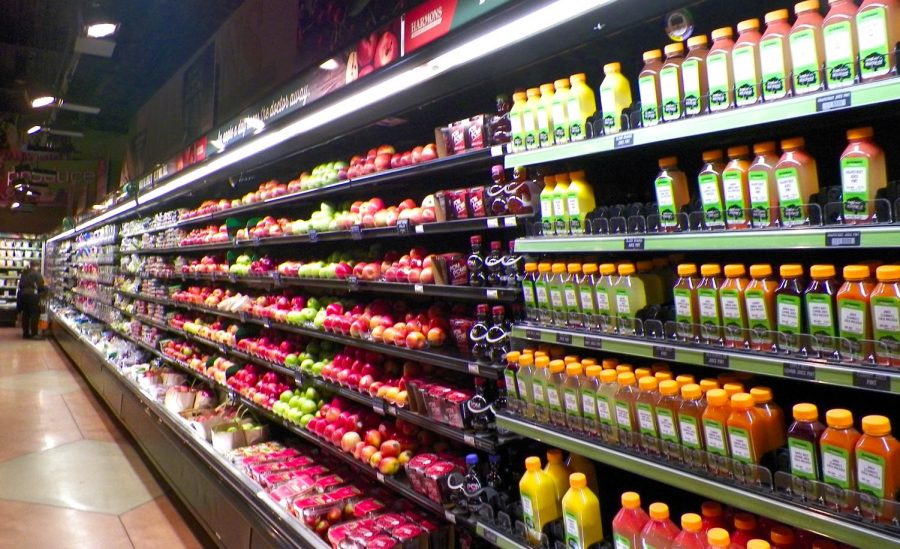Shadley: Utah’s Politicians Choose Hunger for their Constituents
April 13, 2021
Within one mile of my house, there is a Trader Joe’s, Whole Foods, Natural Grocers, Sprouts and two Smith’s. I have a bicycle, free access to UTA through the U, a car, and am able-bodied. Not once since I have moved into this house have I ever given a second thought as to where and how I might purchase affordable, nutritious groceries. However, over 350,000 Utahns face a completely different reality. For one reason or another, those Utahns experience food insecurity.
Hunger in Utah
Food insecurity, which is simply the lack of reliable access to food, is primarily a financial issue, but it can be realized in multiple ways. One way of particular concern is when people are physically unable to reach nutritious food because there isn’t a grocery store nearby and they can’t afford transportation to a farther store. These areas, where at least one-third of residents live greater than one mile from a grocery store, the USDA classifies as food deserts.
In Salt Lake City, the Glendale and Poplar Grove neighborhoods are two of over 6,500 food deserts in the United States, but many other Salt Lake City residents, including a number of University of Utah students, experience food insecurity. Lack of access to food in Utah is not a problem of resources. As Gina Cornia, the Executive Director of Utahns Against Hunger, put it, it’s one of “political will.”
The problem with living in a food desert comes less from the inability to eat and more from the quality of food available. A lower socioeconomic status is consistently associated with less nutritious diets. When Trader Joe’s and Smith’s are too far to shop at on a regular basis and people have no option but to work long hours at a wage far below living, the convenience and affordability of fast food becomes one of the only ways to meet caloric needs. As a result, people living in food deserts experience higher rates of diabetes, cancer and heart disease, which just so happen to be some of the most common comorbidities of the coronavirus.
Not only are people experiencing food insecurity at higher risk during the pandemic, but many have seen their access to food decrease. In a fact sheet that Cornia shared with me before our conversation, the number of households in Utah experiencing food insecurity doubled from 8.2% to 16.7% from February 2020 to February 2021. The rise in food insecurity, however, has not been evenly distributed. Alarmingly, nearly half of all Black households in Utah now experience food insecurity.
Politics at Play
While community food resources and federal benefits programs have stepped in to fill some of the increased need, those community resources often fail to provide “culturally relevant food” for the communities they serve. On top of the increased stress and psychological difficulties of only having access to food that people don’t particularly want to eat, that plays even further into the negative health outcomes. Instead, more robust federal and state benefits programs should allow people to purchase food at a grocery store that they actually wanted and knew how to cook with. Not only would this reduce the administrative costs associated with things like food pantries, but it would provide people experiencing food insecurity with the dignity to make their own choices.
That option is not particularly popular with Utah’s federal delegation. Cornia mentioned that, in response to a conversation about increasing benefits, Sen. Mike Lee’s staff told her that, “they want to make sure that people don’t get used to being on welfare programs.” Putting evaluations of that statement aside, an America where people are able to live without permanent federal assistance is incompatible with Lee’s position on raising the minimum wage. Utah’s State Legislature signaled their agreement with Lee as neither bill to increase the minimum wage passed in the most recent legislative session.
The inability to access food without government assistance doesn’t come from a lack of employment but from a lack of a livable wage. Thousands of employees from companies including Walmart, Fred Meyer, McDonald’s and Amazon are fully employed, yet rely on SNAP to even have a chance at meeting their nutritional needs. They have no choice but to rely on a “fundamentally flawed” food system that leaves hundreds of thousands of Utahns experiencing food insecurity.
However, addressing these fundamental economic issues at the root of food insecurity is not politically popular. Instead, our patchwork system of supplemental food assistance is perpetuated and experimented with in the hopes that it can be shaped into something that is bad, but not quite as bad. While programs like the Urban Greens Mobile Market in Salt Lake City, which drives around Poplar Grove and Glendale providing the opportunity to purchase fresh produce for people living in low access areas, have a positive impact on people currently experiencing food insecurity, the only way to permanently end hunger is to fundamentally change our assumptions about whether or not people deserve access to food.
In 2019, the United States spent $19 billion on farm subsidies, slightly less than the expected $25 billion cost of eradicating hunger in this country. Lack of food, again, is not the problem. The problem is that most of Utah’s representatives don’t believe that everyone has the right to access nutritious food regardless of their socioeconomic status. Next time you have the chance, vote for ones who do.








